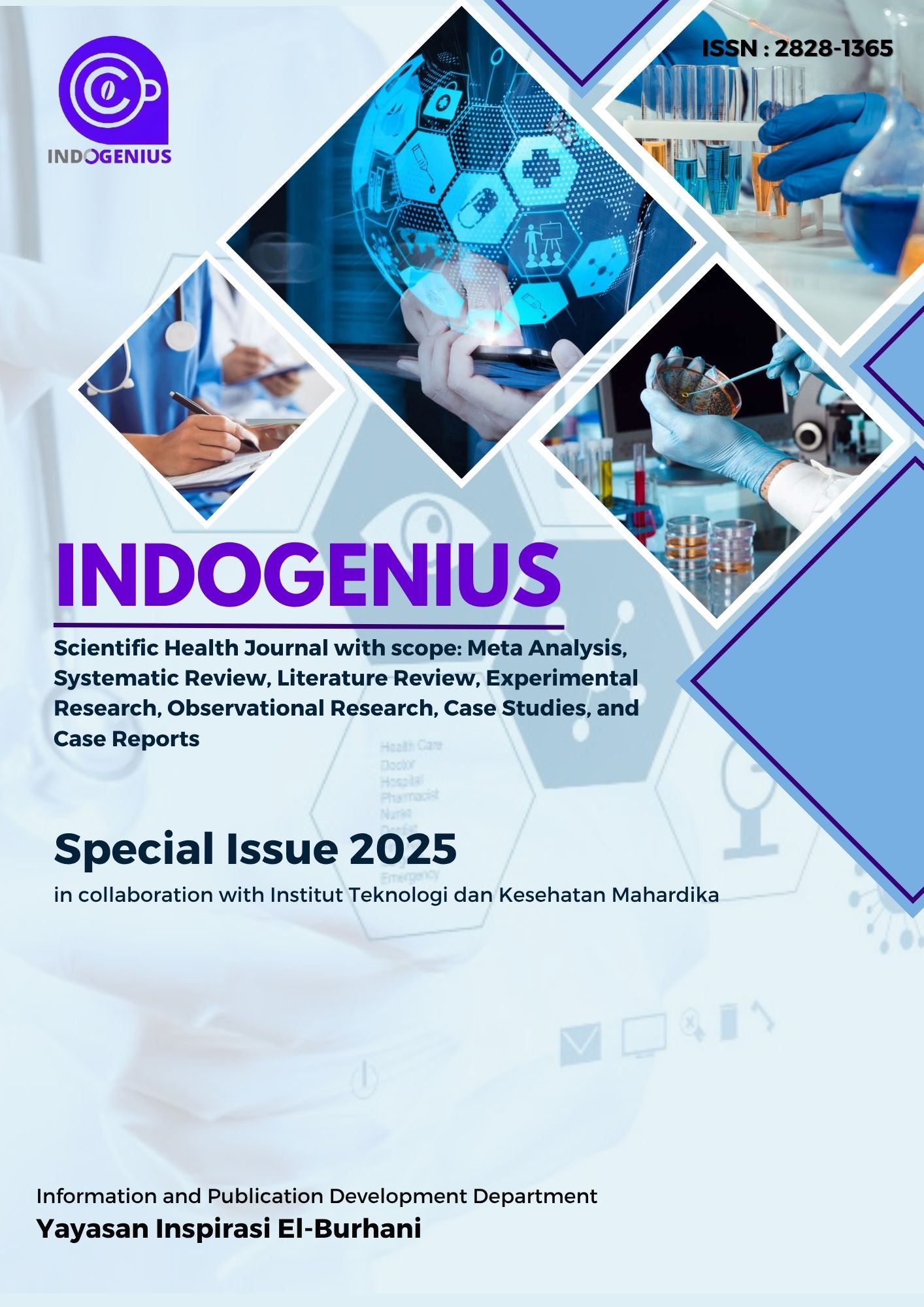The Effect of Spiritual Emotional Freedom Technique on Anxiety Levels of Non-Hemorrhagic Stroke Patients: A Study at RSD Gunung Jati Cirebon
DOI:
https://doi.org/10.56359/igj.v4i2A.722Keywords:
SEFT, Non-Hemorrhagic Stroke, AnxietyAbstract
Background & Objective: Non-hemorrhagic stroke can cause both physical and mental problems, one of which is anxiety. Unresolved anxiety can hinder patient recovery. A holistic nursing approach is needed, one of which is the Spiritual Emotional Freedom Technique (SEFT). This study aims to implement SEFT therapy to reduce anxiety in non-hemorrhagic stroke patients in the Stroke Unit Room at RSD Gunung Jati Cirebon. Method: A descriptive method with a case study approach involved one respondent diagnosed with non-hemorrhagic stroke. Data were collected using observation sheets and questionnaires. Result: A three-day case study showed a decrease in anxiety score from 27 (moderate anxiety) to 8 (no anxiety). Conclusion: SEFT therapy has the potential as an effective non-pharmacological approach to reduce anxiety in non-hemorrhagic stroke patients and can be implemented in nursing care by actively involving patients and their families.
Downloads
References
Akbar, R. R., Anissa, M., Hariyani, I. P., & Rafli, R. (2022). Edukasi Masyarakat Mengenai Gejala Cemas. Jurnal Pengabdian Kepada Masyarakat, 6(4), 876–881. https://doi.org/10.31849/dinamisia.v6i4.10008
Anisa, F., Nurapandi, A., & Kusumawaty, J. (2025). Multifactorial Predisposition Related with Scabies Among Islamic Student. INDOGENIUS, 4(1), 110-117.
Chun, H., Ford, A., Kutlubaev, M., Almeida, O., & Mead, G. (2022). Depression, Anxiety, and Suicide After Stroke: A Narrative Review of the Best Available Evidence. STROKEAHA, 53(4), 1402–1410. https://doi.org/10.1161/STROKEAHA.121.035499
Ichlas Tribakti (2022). Terapi Spiritual Emotional Freedom Technique. Indonesia: CV AZKA PUSTAKA.
Kementerian Kesehatan Republik Indonesia. (2024). Cegah stroke dengan aktivitas fisik. Sehat Negeriku.
Luo, J., Tang, X., Li, F., Wen, H., Wang, L., Ge, S., Tang, C., Xu, N., & Lu, L. (2022). Cigarette smoking and risk of different pathologic types of stroke: A systematic review and dose-response meta-analysis. Frontiers in Neurology, 12, 772373. https://doi.org/10.3389/fneur.2021.772373
Pase, M. P., Himali, J. J., Beiser, A. S., Aparicio, H. J., Satizabal, C. L., Vasan, R. S., ... & Seshadri, S. (2017). Sugar- and artificially sweetened beverages and the risks of incident stroke and dementia: A prospective cohort study. Stroke, 48(5), 1139–1146. https://doi.org/10.1161/STROKEAHA.116.016027
Thalib, A. H. S., & Saleh, F. J. (2022). Effectiveness of Spiritual Emotional Freedom Technique On Improving Quality Of Life In Post Stroke Patients. Jurnal Ilmiah Kesehatan Sandi Husada, 11(1), 82–88.
Syaripudin, A. (2025). Spiritual Well-Being, Self-Care, and Quality of Life in Indonesian Patients with Coronary Heart Disease: A Correlational Study in a Regional Hospital of Cirebon, Indonesia. Journal of Health and Nutrition Research, 4(2), 608-615.
Watson, J., & Woodward, T. K. (2022). Human caring science: A theory of nursing (3rd ed.). Jones & Bartlett Learning
Zhao, Q., Zhang, H., Qiu, J., et al. (2024). Prevalence of poststroke anxiety and its associations with global cognitive impairment: A multicenter cross-sectional study. Journal of Affective Disorders, 345, 125–132. https://doi.org/10.1016/j.jad.2024.02.018
Downloads
Published
How to Cite
Issue
Section
License
Copyright (c) 2025 Andra Rahmadhani, Ahmad Syaripudin, Lily Wahyuni Romadhon

This work is licensed under a Creative Commons Attribution 4.0 International License.

















